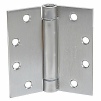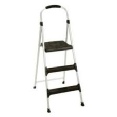www.thetinman.org Copyright © All rights reserved.

Disclaimer: The material presented in this site is intended for public educational purposes only. The author is not offering medical or legal advice. Accuracy of information is attempted but not guaranteed. Before undertaking any diet, or health improvement program, you should consult your physician. The author is in no way liable or responsible for any bodily harm, physical, mental or emotional state of any patient reacting to any of the content on this site. Thetinman.org has not examined, reviewed or tested any product or service mentioned herein. We are not being paid to advertise or promote any product or service mentioned herein. The links are offered strictly as examples of resources available. The site assumes no responsibility or liability of any kind related to the content of external sites or the usage of any product or service referenced. Links to external sites were live at the time of creation of the link. Thetinman.org does not create content for or manage external sites. The information can be changed or removed by the external site’s administrators at any time and they are responsible for the veracity of their information. Links are provided to support our data and supply additional resources. Please report broken links to administrator@thetinman.org. Thetinman.org is not a charitable foundation. It neither accepts nor distributes donations or funds of any kind.


To make the kitchen more user friendly for people with reaching, bending, or standing limitations, move items stored in upper cabinets to the bottom of the cabinet and move items stored in lower cabinets to the top shelves. This will limit the need to reach and bend.
Use a secure step stool with a handlebar to reach items that are up high.
http://www.swmedsource.com/medical_step_stools_footstoo ls_overlay_mats.htm
http://www.medicalproductsdirect.com/footstepstoo.html
Use a grasper for help in retrieving items that fall, are down low, up high, or that end up under, on top of, behind, or between furnishings, or hard to reach areas.
 Do some creative reorganizing. Make sure a daily supply of cups, plates, bowls, and
utensils are easily available.
Do some creative reorganizing. Make sure a daily supply of cups, plates, bowls, and
utensils are easily available.
It may not be financially possible to renovate the kitchen so that cabinets and counters are wheelchair accessible, but you can remove the doors from the lower cabinets so the wheel chair can get close. If that is not practical due to children or pets, there are hinges that allow cabinet doors to open 180 degrees.

http://www.stanleydoorhinges.com/
http://www.hardwaresource.com/
Place commonly used items in the easiest to reach places.
Install large, easy to grasp drawer pulls that are easy to open with one hand, without twisting the wrist or using any tight grasping or pinching motion. The best pulls for this purpose are U-shaped.
Levers or push-type mechanisms also are acceptable.
http://www.doorware.com/specials/help-center/door-hardware-ada-compliant.cfm
http://www.directdoorhardware.com/
http://accessiblelifestyle.com/services/kitchens.html
Install sliding drawers in lower cabinets to avoid having to reach in.
Install levered handled faucets and kitchen spray heads to improve usability and access for individuals with disabilities or who cannot stand for extended periods of time. A single handle faucet is easier to turn on and off.
Some grocery stores offer online shopping with or without free delivery. Check into local resources in your area.
http://shop.safeway.com/ecom/home
Meals can be cooked ahead of time on weekends and frozen for reheating through the week. When cooking your favorite foods, make extra batches and freeze them.
Crock pot meals can benefit those who still work, or people who are too exhausted to cook in the evenings.
Create a folder of menus for restaurants that deliver. Add their phone numbers to the contacts list in your cell phone.
Research food assistance agencies and services. There are many agencies at the state and local level that offer food assistance: search online for your specific area.
There are many churches and charitable organizations that offer meal delivery.
Meals on wheels http://www.mowaa.org/
http://www.fns.usda.gov/snap/snap-special-rules-elderly-or-disabled
Just because a person loses the ability to cook for themselves, does not mean they should have to eat whatever other people decide to serve them. Their preferences, allergies, sensitivities, etc. are still valid. Well-meaning visitors (or charitable services) may drop off items that are either inappropriate (cakes, cookies, and candies for diabetics) or unwelcome.
For those providing food, consult with the patient regarding their wishes and needs, but also pay attention to what they should and should not have based on their health needs, individual food restrictions, physician’s orders, allergies, and dislikes.
Rather than wading through lists of things you could potentially eat, it is easier to make a shorter list of the things you do like to eat and can eat. It is also helpful to note what a serving size is and list the amount of calories and carbs for each serving.
The information label references the data for one serving. The container could have anywhere from 2 to 10 servings inside. You must multiply the grams/numbers listed by the number of servings if you consume the entire container or prepared meal.
Dietary Preference, Restrictions, and Do Not Serve Form
http://www.livestrong.com/myplate/
http://www.diabetes.org/food-and-fitness/food/
https://itunes.apple.com/us/app/carb-master-daily-carbohydrate/id368154003
https://itunes.apple.com/us/app/daily-carb-premium-carbohydrate/id531305994
Patients with limited mobility or those that are bedridden have different nutritional requirements than an active, mobile person. Consultation with a dietician can be helpful in determining the right types of meals.
http://www.livestrong.com/article/313246-diet-for-handicapped-or-bedridden-people/
http://livehealthy.chron.com/calorie-requirements-bedridden-seniors-9866.html
http://livehealthy.chron.com/calorie-requirements-underweight-elderly-3291.html
Schedule meals around medications.
If you have trouble swallowing, do not use a straw.
If you have problems chewing, cut food into small bites or consider purees or mashing it.
Sit up as straight as possible when eating and stay upright for 30 minutes after eating.
If you have problems with swallowing or choking, discuss it with your health care provider.
Allow as much time to eat as possible, don't rush.
Consider smaller, more frequent meals.
Your loved-ones and caregivers should learn the Heimlich maneuver.
Mayo Clinic First Aid Choking Basics
Special cups cut down one side make it easier to sip from them.
Insulated dishes keep food warmer longer.
High-low scoop plates keep food from sliding off.
A rocker knife helps cut food.
A pizza cutter also helps cut food.
Angled utensils make lifting food easier.
Spill-proof cups won't leak as much if dropped.
Non-slip mats can keep plates in place.
Visit these sites for these tools and more.
http://www.caregiverproducts.com/kitchen.html
http://www.ameds.com/daily-living-aids/eating-aids/adaptive-eating-utensils.html
http://www.lifesolutionsplus.com/kitchen-aids-c-30.html
http://www.essentialaids.com/kitchen-aids-feeding-aids.html
http://www.easierliving.com/all-products/dining/
http://www.completecareshop.co.uk/eating-aids/


KITCHEN, COOKING & GROCERIES
Living with SPS Self Care Grooming Dressing Bedroom Safety Housebound/Bedridden
Kitchen,Cooking & Groceries Home Care Hiring a Service In-Home Care Exercise Mobility Driving
Managing Medications SPS & Pregnancy Organizing Information Financial Aid Legal Aid Mental Health
Anxiety & Depression Suicide Prevention Relationship Health Risk of Abuse Venting Caregiving
Disclaimer: The material presented in this site is intended for public educational purposes only. The author is not offering medical or legal advice. Accuracy of information is attempted but not guaranteed. Before undertaking any diet, or health improvement program, you should consult your physician. The author is in no way liable or responsible for any bodily harm, physical, mental or emotional state of any patient reacting to any of the content this site. Thetinman.org has not examined, reviewed or tested any product or service mentioned herein. We are not being paid to advertise or promote any product or service mentioned herein. The links are offered strictly as examples of resources available. The site assumes no responsibility or liability of any kind related to the content of external sites or the usage of any product or service referenced. Links to external sites were live at the time of creation of the link. Thetinman.org does not create content for or manage external sites. The information can be changed or removed by the external site’s administrators at any time and they are responsible for the veracity of their information. Links are provided to support our data and supply additional resources. Please report broken links to administrator@thetinman.org.